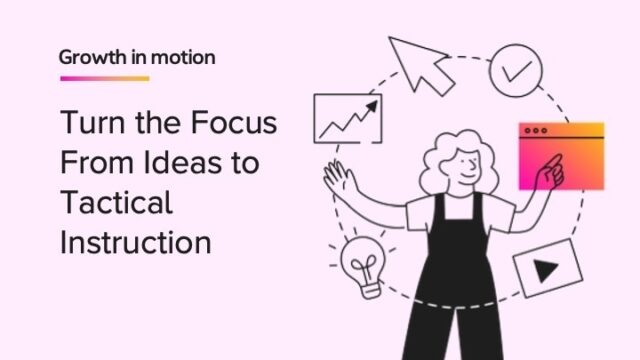
Every school year, millions of meetings take place across the country as educators collaborate to support student learning through multi-tiered systems of support (MTSS). These meetings represent a significant investment of time and effort aimed at improving outcomes for all learners, especially those with learning differences who face the greatest challenges in progress and achievement.
To make the most of this time, school teams must focus on identifying effective interventions. But what exactly is intervention in the context of special education? How does it differ from specially designed instruction (SDI)? And how can tools like MTSS and response to intervention (RTI) guide our decisions?
Let’s look at how special education as an intervention offers a powerful lens for supporting students with learning differences within a broader system of instructional support.
Definition of intervention in special education
Intervention in special education refers to targeted instructional approaches designed for students with identified disabilities. These supports are part of a student’s individualized education program (IEP) and aim to close learning gaps and ensure access to grade-level curriculum through specially designed instruction.
The difference between general education and special education interventions is how intense, frequent, and long-lasting the support needs to be. If progress monitoring shows that a student needs more time and targeted help with a proven program, the team might refer the student for an evaluation to see if they have a disability that qualifies them for special education services.
While interventions can vary in intensity and focus, they are distinct from general classroom differentiation. (Differentiated instruction for special education students is the same as it is for general education students.)
Intervention vs. special education
School teams sometimes regard special education as a type of intervention, especially when supports become more intensive and individualized. While this perspective can be helpful in understanding the continuum of support, it’s important to distinguish between a general intervention in education and special education services.
Intervention refers to targeted instructional strategies used within general education to address specific learning or behavioral needs. These supports are often delivered through frameworks like MTSS or RTI and do not require formal eligibility. They are designed to prevent academic failure and close learning gaps before a student requires more intensive services.
Special education, on the other hand, is specially designed instruction that is legally mandated under the Individuals with Disabilities Education Act (IDEA). It requires a formal evaluation process to determine eligibility and results in an individualized education program (IEP) tailored to the student’s unique needs.
Focus Area |
Intervention |
Special Education |
|
Purpose |
Implement targeted strategies used in general education to address specific academic or behavioral needs |
Deliver legally defined, individualized instruction through an Individualized Education Program (IEP) |
|
Legal basis |
Not mandated by law; part of general education support systems like MTSS/RTI |
Mandated under Individuals with Disabilities Education Act (IDEA) |
|
Instructional design |
Utilizes evidence-based strategies and tiered supports to address academic skill gaps |
Provides individualized instruction tailored to IEP goals, using adaptive pacing, scaffolded supports, and personalized materials |
|
Eligibility |
No formal eligibility; based on performance data and teacher observation |
Requires formal evaluation and eligibility determination under IDEA |
|
Understanding these differences helps teams make informed decisions about when a student may need to move from general education supports to special education services. It also reinforces the importance of using data and collaboration to ensure that every student receives the level of support they need to succeed.
Response to intervention and special education
RTI in special education bears a closer look. RTI is a framework designed to provide early, systematic support to students who are struggling academically or behaviorally. It emphasizes high-quality instruction, frequent progress monitoring, and data-driven decision-making to determine how well students respond to targeted interventions.
RTI plays a critical role in the special education evaluation process. Under the Individuals with Disabilities Education Act (IDEA), schools are permitted to use RTI data as part of the process to determine whether a student has a specific learning disability. This approach allows teams to assess whether a student’s difficulties are due to a lack of appropriate instruction or an underlying disability.
By implementing RTI, schools can:
- Prevent unnecessary referrals to special education by addressing learning gaps early
- Document a student’s response to evidence-based interventions, which can inform eligibility decisions
- Ensure that instruction is appropriate and consistent before considering special education services
When a student does not make adequate progress despite well-implemented interventions, the data collected through RTI can support a referral for a formal evaluation under IDEA. If the student is found eligible, the team develops an individualized education program (IEP) that outlines specially designed instruction tailored to the student’s unique needs.
Types of intervention in special education
Interventions in special education are designed to address specific academic, behavioral, and developmental needs that interfere with a student’s ability to access and benefit from the general curriculum. These interventions go beyond general education supports and are often part of a student’s IEP.
To ensure effectiveness, educators use a structured approach like data-based individualization (DBI), which involves ongoing progress monitoring, diagnostic data review, and systematic adjustments to instruction.
Here are examples of interventions in special education:
- Academic interventions target foundational skills in reading, writing, math, and other core subjects. Examples include phonics-based reading programs, structured writing supports, and scaffolded math instruction.
- Behavioral interventions address challenges using strategies like behavior plans, positive reinforcement systems, and instruction in social skills.
- Related services are provided for students when the team determines the services are required in order for the student to benefit from their IEP. This may include speech/language services, occupational therapy, physical therapy, and mental health counseling.
Special education intervention strategies
Educators use a range of instructional intervention strategies in special education to support students with diverse learning needs and help them access the general curriculum.
- Explicit instruction: Clear, direct teaching of concepts with modeling and guided practice
- Scaffolded learning: Breaking tasks into manageable steps with support that decreases over time
- Multisensory instruction: Using visual, auditory, and kinesthetic methods (e.g., Orton-Gillingham for reading)
- Small-group instruction: Targeted instruction in groups of 3–5 students
- Repeated practice and review: Frequent opportunities to reinforce skills
- Graphic organizers: Visual tools to support comprehension and organization of ideas
- Assistive technology: Tools like text-to-speech or speech-to-text software or audiobooks
Best practices for implementing special education interventions
The following steps outline best practices for implementing instructional interventions in special education, ensuring that supports are targeted, data-driven, and responsive to student needs.
1. Start with a validated intervention program
Use research-based interventions for special education that are peer-reviewed and designed to address specific learning needs.
2. Conduct ongoing progress monitoring
Track student performance regularly to determine whether the intervention is working.
3. Review diagnostic data
Use assessments to understand the root causes of learning difficulties and tailor instruction accordingly.
4. Adapt and intensify interventions as needed
If students aren’t responding, increase the frequency, duration, or individualization of support.
5. Use a structured framework
Apply models like DBI and the Taxonomy of Intervention Intensity to guide decision-making.
6. Collaborate across teams
Use meeting time effectively to reflect, plan, and adjust interventions based on student data.
By combining targeted interventions with a structured framework for delivery, educators can ensure that students receive the support they need to make meaningful progress.
Ensuring interventions are meaningful
Given the number of meetings that take place in schools each year, it's essential that teams also set aside time to plan interventions. These opportunities to shape and improve student learning shouldn't be missed. By choosing proven programs, tracking progress, and adjusting instruction based on data, educators can make sure interventions truly help. When students don’t respond as expected, intensifying support using research-based strategies—like those outlined in the Taxonomy of Intervention Intensity—can help close learning gaps.
Remember that when planning for special education interventions, the key is using meeting time wisely: collaborating, reflecting, and refining plans to accelerate growth. When teams work together with purpose, they can change the trajectory of student achievement and deliver strong outcomes for all learners.
***
Unlock whole-brain reading through Read 180, the leading literacy intervention program for Grades 3–12.
Explore Math 180, our revolutionary approach to math intervention for students in Grades 3–12.
Get quick tips for bringing RTI into the core classroom.














